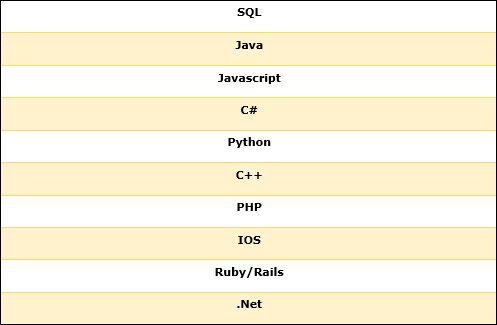Programming Languages
The computer system is simply a machine and hence it cannot perform any work; therefore, in order to make it functional different languages are developed, which are known as programming languages or simply computer languages.
Over the last two decades, dozens of computer languages have been developed. Each of these languages comes with its own set of vocabulary and rules, better known as syntax. Furthermore, while writing the computer language, syntax has to be followed literally, as even a small mistake will result in an error and not generate the required output.
Following are the major categories of Programming Languages −
- Machine Language
- Assembly Language
- High Level Language
- System Language
- Scripting Language
Let us discuss the programming languages in brief.
Machine Language or Code
This is the language that is written for the computer hardware. Such language is effected directly by the central processing unit (CPU) of a computer system.
Assembly Language
It is a language of an encoding of machine code that makes simpler and readable.
High Level Language
The high level language is simple and easy to understand and it is similar to English language. For example, COBOL, FORTRAN, BASIC, C, C+, Python, etc.
High-level languages are very important, as they help in developing complex software and they have the following advantages −
Unlike assembly language or machine language, users do not need to learn the high-level language in order to work with it.
High-level languages are similar to natural languages, therefore, easy to learn and understand.
High-level language is designed in such a way that it detects the errors immediately.
High-level language is easy to maintain and it can be easily modified.
High-level language makes development faster.
High-level language is comparatively cheaper to develop.
High-level language is easier to document.
Although a high-level language has many benefits, yet it also has a drawback. It has poor control on machine/hardware.
The following table lists down the frequently used languages −

Hardware and Software
The following table highlights the points that differentiate a hardware from a software.
| Hardware | Software |
|---|---|
| It is the physical component of a computer system. | It is the programming language that makes hardware functional. |
| It has the permanent shape and structure, which cannot be modified. | It can be modified and reused, as it has no permanent shape and structure. |
| The external agents such as dust, mouse, insects, humidity, heat, etc. can affect the hardware (as it is tangible). | The external agents such as dust, mouse, insects, humidity, heat, etc. cannot affect (as it is not tangible). |
| It works with binary code (i.e., 1’s to 0’s) . | It functions with the help of high level language like COBOL, BASIC, JAVA, etc. |
| It takes in only machine language, i.e., lower level language. | It takes in higher level language, easily readable by a human being. |
| It is not affected by the computer bug or virus. | It is affected by the computer bug or virus. |
| It cannot be transferred from one place to other electronically. | It can transfer from one place to other electronically. |
| Duplicate copy of hardware cannot be created. | A user can create copies of a software as many as he wishes. |


0 Comments